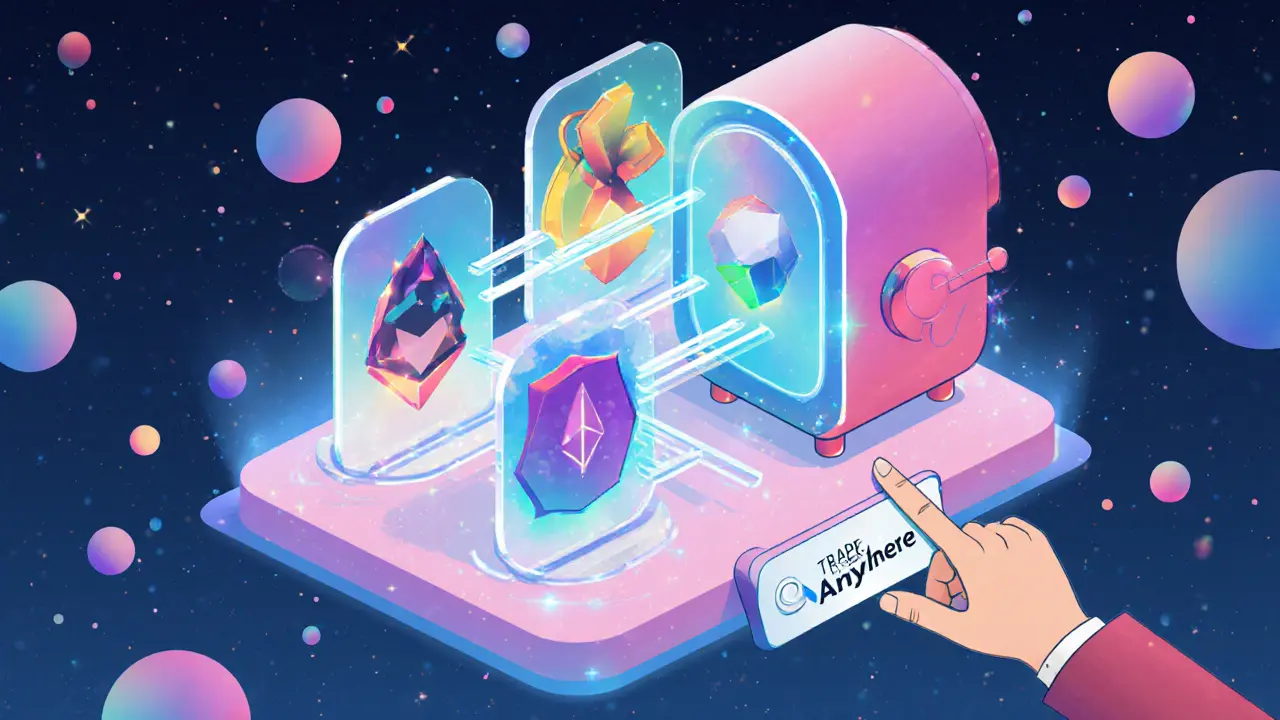NFT Interoperability: How Cross-Chain NFTs Work and Why It Matters
When you own an NFT, it’s usually locked to one blockchain—like Ethereum, BSC, or Solana. But what if you could take that NFT from one chain to another? That’s NFT interoperability, the ability to move non-fungible tokens between different blockchain networks without losing their value or functionality. It’s not just a tech buzzword—it’s the missing piece that could turn NFTs from collectibles into usable digital assets. Right now, most NFTs are like digital paintings stuck in one gallery. You can’t hang them on another wall, even if that wall has better lighting and more visitors.
NFT bridges, specialized protocols that lock an NFT on one chain and mint a version on another. Also known as cross-chain NFT wrappers, these tools let you move your Bored Ape from Ethereum to Polygon or your digital land from Solana to Base. But here’s the catch: not all bridges are safe. Many have been hacked, and some just vanish with your NFT. The ones that work—like the ones used in the IGU AI-enhanced NFT airdrop or Wrapped Cardano (WADA)—rely on smart contracts that keep the original asset locked while creating a trusted copy elsewhere.
DeFi NFT, NFTs that interact with lending, staking, or liquidity pools across blockchains are starting to appear. Imagine using your NFT as collateral on a DeFi platform that only works on Arbitrum, even if your NFT was originally minted on Solana. That’s the goal. But it’s still rare. Most NFTs today are static images with no real utility beyond speculation. True interoperability means your NFT can be used in games, marketplaces, or wallets on any chain—without needing to sell and rebuy it.
Why does this matter now? Because the next wave of NFT projects won’t be about owning a JPEG. They’ll be about using your NFTs across apps, games, and economies. The TopGoal NFT airdrop and IguVerse’s AI pets showed that NFTs can evolve with user behavior—but only if they can move between platforms. Right now, if you want to use your NFT in a new game or marketplace, you’re often stuck. You either sell it and buy a new one, or you don’t use it at all.
There’s no single standard yet. Some use ERC-1155 for semi-fungible assets. Others rely on layer-2 solutions or custom bridge contracts. But the trend is clear: NFTs that can travel will outlast those that can’t. The posts below show real examples—some working, some failed—of how NFT interoperability is being built, broken, and exploited. You’ll see how airdrops tried to force adoption, how wrapped tokens unlocked access, and why most NFT projects still ignore this problem. What you learn here won’t just help you trade smarter—it might save you from losing your assets to a broken bridge.
Cross-Chain NFT Marketplace Support: Trade Across Blockchains Without Switching Platforms
Cross-chain NFT marketplaces let you trade digital assets across Ethereum, Solana, Polygon, and more without switching platforms. Discover how they work, which ones lead in 2025, and why staying on one chain limits your profits.
Details +